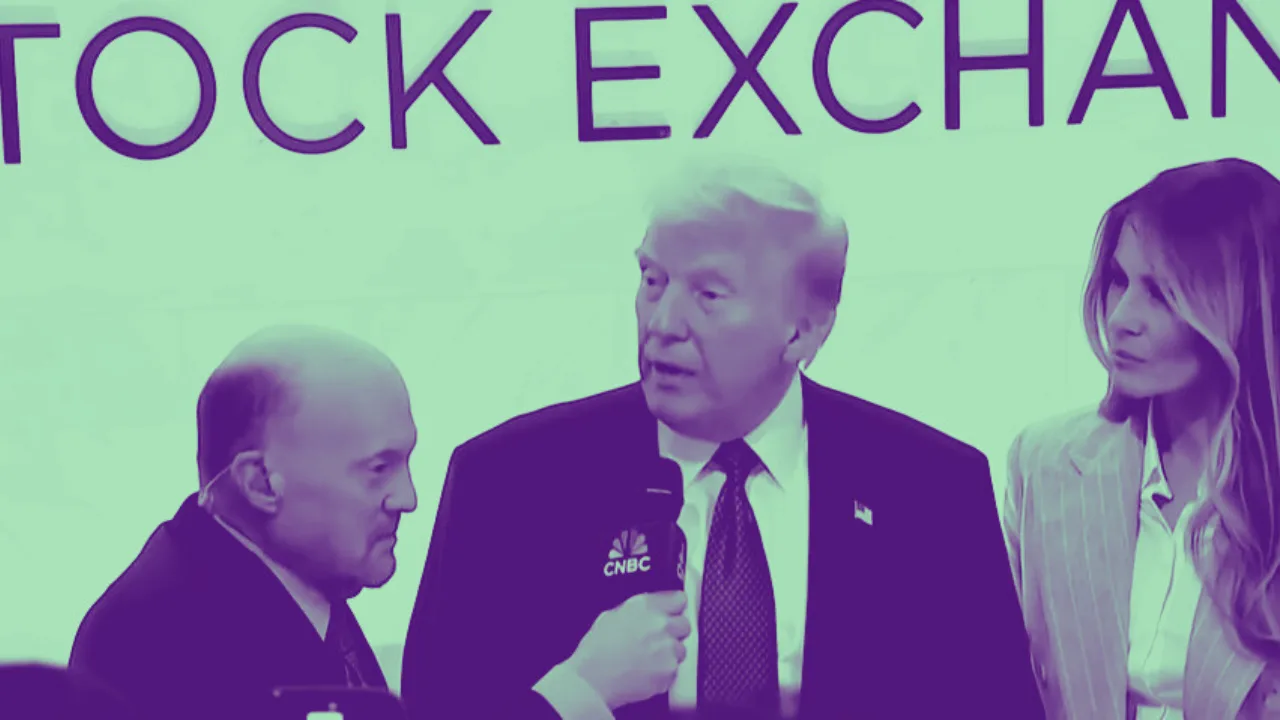Investing with an eye on government spending makes sense. But building a portfolio based on political ideology? That’s a losing game.
As the influence of Washington grows over economic policy, some investors are tempted to align their portfolios with their personal political beliefs. At first glance, it sounds smart — match your investments with the party you think will spend the most, deregulate the most, or stimulate the right sectors.
And yet, history shows that betting on politics as an investment strategy often yields disappointing results—case in point: the MAGA ETF.
MAGA vs. DEMZ: The Numbers Don’t Lie
The Point Bridge America First ETF (ticker: MAGA) was designed to cater to conservatives seeking to invest in companies aligned with Republican values. It seemed perfectly timed for the so-called “red wave” that swept the White House, Senate, and House in November. But despite the favorable political winds, MAGA underperformed. Since the day before that election, the ETF has returned just 1.7%.
By comparison, the broader S&P 500 returned 4.5% over the same period. Even more striking, the DEMZ ETF — which targets companies making 75% or more of their political contributions to Democratic causes — returned 6.3%.
This divergence isn’t due to ideology but rather to sector exposure. MAGA is heavily tilted toward traditional industries, such as oil, chemicals, and homebuilding — sectors that have been hit hard by falling housing starts and declining commodity prices. Meanwhile, DEMZ holds more weight in tech, entertainment, and fashion, areas that have delivered substantial gains in recent quarters.
Interestingly, a few companies, including Paychex and Kimberly-Clark, appear in both ETFs. A fictional “bipartisan” ETF composed of just those two stocks would have returned 10%, outperforming both MAGA and DEMZ.
Takeaway: Political identity is not an investment thesis.
Government Spending Still Matters
While investing based solely on politics may not work, ignoring government influence is also a mistake. The U.S. government now accounts for 35% to 40% of the country’s GDP, according to UBS Global Wealth Management CIO Mark Haefele, who discusses the trend in his book, The New Rules of Investing: Essential Wealth Strategies for Turbulent Times.
“The era of purely free markets is fading,” Haefele writes. “Investing in what the government is buying — and spending on — is increasingly where the smart money is heading.”
Recent examples prove the point:
- The CHIPS Act sparked a rally in semiconductor stocks.
- The Inflation Reduction Act boosted infrastructure and green energy firms.
- Defense budgets are sending billions toward aerospace and cybersecurity firms.
The New Trump Era and Market Uncertainty
President Trump’s recent announcement of sweeping global tariffs caused sharp swings in the markets, underscoring how unpredictable political leadership can become an investment liability. Stocks fell initially, then rebounded after negotiations led to a partial tariff pause.
Major companies, such as Mattel, Walmart, and Apple, have felt the sting. Trump publicly criticized them for discussing cost increases or offshore manufacturing, and those remarks had real financial consequences.
Add in a gridlocked Congress struggling to pass a budget amid ballooning deficits, and the result is a volatile environment where traditional hedges, such as bonds, have faltered. Long-dated Treasuries are down. Yields are up. And uncertainty reigns.
What to Do Instead: Follow Structural Themes
Rather than reacting to every political headline, Haefele suggests a top-down investment strategy based on broad, long-term trends shaping global economies. His three key themes:
- Digitalization – Especially artificial intelligence and cybersecurity.
- Decarbonization – Renewable energy, electrification, and sustainable infrastructure.
- Demographics – Aging populations driving demand for healthcare and biotech.
These are areas where governments across the world are committing real money — not just political rhetoric.
Think Big Picture, Not Party Lines
It’s also critical to remember that asset allocation, not individual stock picking, drives the bulk of returns. Haefele puts the number at 80%.
“If you want to devote your life to picking stocks… I don’t recommend that as a lifestyle,” he says. “That’s what we do.”
Vanguard’s Joseph Davis echoes this view in his new book Coming Into View: How AI and Other Megatrends Will Shape Your Investments. He identifies two dominant forces for future investors:
- Artificial Intelligence
- Soaring Government Deficits
According to Davis, AI could be as revolutionary as electricity or the internet, with gains flowing not just to tech companies but also to AI adopters in finance, healthcare, and logistics. However, if Congress fails to rein in spending, deficits could overwhelm those gains — a scenario he calls “deficit-dominant.”
In that case, interest rates could rise significantly, hitting valuations across the board. “The stock market isn’t prepared for that outcome,” Davis warns.
Why the Old Safety Nets May Not Work Anymore
For years, investors have relied on what’s been dubbed the “Fed put,” or more recently, the “Trump put.” Every market panic was met with interest rate cuts or massive federal stimulus.
But those backstops may be weakening. Globalization, which once suppressed inflation and helped enable low interest rates, is retreating. Trump’s trade policies are gaining bipartisan support, and companies are reevaluating their supply chains.
Inflation remains persistent. Interest rates are already elevated. And bond buyers are showing resistance to higher government borrowing.
Bottom line: Markets may no longer count on the Fed or the White House to bail them out.
Portfolio Strategy in a New Reality
Vanguard expects U.S. stock market returns to average around 6% annually, after accounting for inflation, over the next decade — down from the long-term average of 10%. And Davis strongly recommends investors diversify globally. He suggests allocating at least 20% of equity exposure to international markets, where valuations are cheaper and potential returns higher.
As of mid-2025, non-U.S. stocks have outperformed the S&P 500 by 13 percentage points year-to-date. They also offer currency diversification — a helpful hedge if the dollar weakens further.
One way to gain this exposure is through the Vanguard FTSE All-World ex-US ETF, a low-cost fund that covers developed and emerging markets outside the U.S.
Beyond Stocks: Income and Diversification Ideas
In today’s environment, traditional bonds may not offer the same level of protection. Long-term Treasuries are susceptible to steep price declines if interest rates continue to rise. But there are alternatives:
- Short-term Treasury bills: Offering 4.3% yields with minimal risk.
- High-yield corporate bonds: The iShares 0-5 Year High Yield Corporate Bond ETF yields 7.4% with low duration risk.
- Gold and Bitcoin: Recently hit new highs as hedges against inflation and dollar devaluation.
BlackRock’s Russ Brownback calls it a “golden age for income investors.” However, even income strategies must be approached carefully — a 5% yield won’t help much if the principal declines by 10%.
Final Advice: Keep Politics Out of Portfolios
One striking statistic from Vanguard: just 4% of all publicly traded stocks have accounted for half of the total excess return over cash in the past 100 years.
Translation: Most investors struggle to pick winners consistently. That’s why indexing remains such a powerful tool.
Whether you’re bullish on MAGA or prefer DEMZ, it’s best to leave political sentiment out of your investing strategy. Instead, focus on:
- Durable economic themes
- Prudent asset allocation
- Global diversification
- Real government spending priorities — not partisan narratives
In a world of uncertainty and fiscal strain, sticking to fundamentals — and tuning out the noise — is the smarter long game.





